7 ways to save fuel in winter
Content
Theoretically, fuel consumption in winter should be lower: colder air is denser and provides better mixtures and better mixtures (the same as in some engines a cooler or intercooler).
But theory, as you well know, does not always coincide with practice. In real life, costs in winter are higher than costs in summer, sometimes significantly. This is due to both objective factors and driving errors.
The objective factors are obvious: winter tires with increased rolling resistance; always-on heating and all kinds of heaters - for windows, for wipers, for seats and a steering wheel; oil thickening in bearings due to low temperatures, which increases friction. There is nothing you can do about it.
But there are many subjective factors that increase consumption in the cold, and they already depend on you.
Morning warm up
There is an age-old debate in automotive circles: to warm up or not to warm up the engine before starting. We've heard all sorts of arguments - about the environment, about how new engines don't need to be heated, and vice versa - about standing still for 10 minutes with constant throttle.
Unofficially, the engineers of the manufacturing companies told us the following: for the engine, no matter how new it is, it is good to run one and a half to two minutes at idle, without gas, in order to resume proper lubrication. Then start driving and drive moderately for ten minutes until the engine temperature rises.
Morning Warming II
However, there is no point in waiting for this before your departure. It's just a waste of fuel. If the engine starts to move, it will reach its optimum temperature much faster. And if you heat it in place by applying gas, you will inflict the same damage on the moving parts in it that you are trying to avoid.
In short: start your car in the morning, then clear away snow, ice or leaves, make sure you haven't forgotten anything, and drive away.
Thoroughly clear the car of snow
Riding with a roof press is dangerous for both you and those around you - you never know where the melting from the rising cabin temperature will bring it down. You can cause an accident, your windshield can suddenly become opaque at the most inopportune moment.
But if these arguments don't impress you, here's another one: the snow is heavy. And weighs a lot. A poorly cleaned car can carry tens or even hundreds of extra pounds. Air resistance also deteriorates greatly. These two things make the car slower and increase fuel consumption by 100 liters per 100 km.
Check tire pressure
Many people think that having bought new tires, they should not think about them for at least a year. But in the cold, the air in your tires compresses - not to mention the fact that even a daily drive through the city with its potholes and speed bumps gradually carries the air out. And low tire pressure means increased rolling resistance, which can easily increase fuel consumption per liter per 100 km. It is worth checking the tire pressure once or twice a week, for example when refueling.
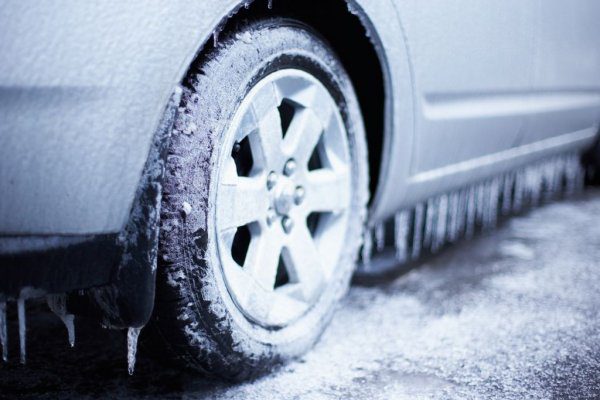
Consumption also depends on the oil
In recent years, most manufacturers have introduced so-called "energy-saving" oils, such as the 0W-20 type, instead of the traditional 5W-30, and so on. They have a lower viscosity and less resistance to moving engine parts. The main advantage of this is a cold start, but an added bonus is a slightly reduced fuel consumption. The downside is that they require more frequent shifts. But the engine has a chance to live longer. So trust the manufacturer's recommendations, even if a local craftsman explains that an oil with this viscosity is "too thin".
Does a car blanket make sense
In some northern countries, led by Russia, so-called car blankets are especially modern. Made from inorganic, non-combustible filaments, they are placed on the engine under the hood, the idea is to keep the unit at a temperature longer and not completely cool down between two trips on your workday.
To be honest, we're pretty skeptical. Firstly, most cars already have an insulating layer with this function under the hood. Secondly, the "blanket" only covers the top of the engine, allowing heat to dissipate in all other directions. One video blogger recently conducted an experiment and found that at the same start-up temperature, after an hour at minus 16 degrees, the engine, covered with a blanket, cooled to 56 degrees Celsius. Uncoated cools down to ... 52 degrees Celsius.

Electrical heating
Cars destined for markets such as Scandinavian are often equipped with an additional electric engine heater. In countries such as Sweden or Canada, it is common practice to have 220 volt outlets in car parks for this purpose. This significantly reduces cold start damage and saves fuel.

Trunk cleaning
Many of us use the cargo hold of our car as a second closet, stuffing it with something. Others strive to be ready for any situation in life and have a full set of tools, a shovel, a pipe, a second jack ... However, every extra kilogram in the car affects consumption. At one time, the tuning masters said: an extra weight of 15 kilograms compensates for horsepower. Inspect your trunks and keep only what you need in the current seasonal conditions.

Calm and only calm
Carlson's immortal motto living on the roof is especially relevant in terms of winter driving and winter spending. Controlled and calculated driving behavior can reduce consumption by 2 liters per 100 km. To do this, simply avoid sharp accelerations and decide where you need to stop.


